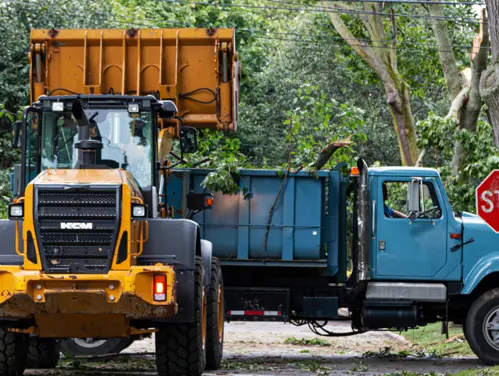On this page...
Federal Public Assistance Program
Under the Public Assistance program, FEMA awards grants to assist state, local, tribal and territorial governments and certain private nonprofit organizations with the response to and recovery from disasters. The program provides funding for debris removal, implementation of emergency protective measures and permanent restoration of infrastructure. The program also encourages protection from future damage by providing assistance for hazard mitigation measures during the recovery process. The state works with FEMA to manage the program and administer the funding.
For all disasters declared on or after Oct. 1, 2023, the State must have sustained the minimum amount of damage statewide (according to FEMA regulations) of $1.84 per capita, or $5,870,279, to qualify for Public Assistance funding.
Once this statewide minimum has been met, then the qualifying amount of damage per capita in each county must reach at least $4.60.
Back to topPublic Assistance Information for Iowa Disasters
Back to topHistoric Preservation
In the course of executing your disaster recovery grant, you may encounter previously unknown cultural/historic artifacts. Please follow this process:
I. Treatment of human remains and items of religious and cultural significance
A. In the event that human remains are encountered during archaeological investigations or construction activity, ensure that the remains are left in place, that work within 100 feet of the remains will cease, the site will be secured, and the following entities will be contacted immediately upon discovery: local law enforcement, the State Medical Examiner, and the director of the Bioarchaeology Program at the OSA either directly or through the State Archaeologist. If the project is funded by the Federal Emergency Management Agency (FEMA), then notify the Iowa Department of Homeland Security and Emergency Management (HSEM), FEMA, and the Iowa State Historic Preservation Officer within 24 hours.
B. All ancient human remains (over 150 years old) in Iowa are protected by the following sections of the Iowa Code: Chapter 263B, 523I.316(6), 685-11.1 and 716.5. Ancient human remains discovered on Federal and/or tribal lands as a result of the Undertaking are also protected under the Native American Graves Protection and Repatriation Act (NAGPRA) (25 U.S.C. 3001-3005).
C. If the remains are determined to be ancient, the Bioarchaeology Program at the OSA shall have jurisdiction to ensure that the Iowa Code as well as Native American Graves Protection and Repatriation Act (NAGPRA) and its implementing regulations (43 CFR Part 10), as applicable, are observed. The disposition of the remains will be arranged by the director of the Bioarchaeology Program and the State Archaeologist in consultation with the culturally affiliated Tribe(s) and the OSA’s Indian Advisory Council, or other descendant communities as applicable.
D. Any dispute regarding the applicability of NAGPRA as a result of the Undertaking shall be resolved in accordance with 43 CFR Part 10.17.
E. If the remains are determined to be less than 150 years old, the Iowa Department of Public Health will be notified. The OSA will coordinate with the State Medical Examiner (SME) to determine the ancestry and antiquity of the remains. If remains are identified as Native American and not of medicolegal significance, the OSA will coordinate with the SME and Tribes to determine the appropriate disposition.
Back to top